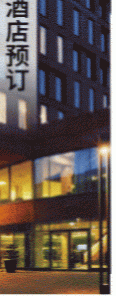|
  
- 积分
- 107660
- 威望
- 41024
- 金钱
- 6
- 阅读权限
- 130
- 性别
- 男
- 在线时间
- 3126 小时
|

到柏林,身上没有欧元,没有关系!!!
如果你到柏林克鲁斯柏区买东西,身上没有欧元,没有关系,你可以像本地人一样,用「柏林元」付帐,买一瓶10欧元的白葡萄酒,你可以付10柏林元,买一罐4.2欧元的有机蜂蜜,你可以付4.2柏林元。3 k/ S* `: A3 H1 W3 l
( k" F; K# W6 S5 ~+ B
店员或咖啡店服务生甚至接受用柏林元给的小帐。德国人从五年前开端到现在,大约发行了20种地方私币,柏林元只是其中一种,柏林元是地方环保团体发行的非「法币」,是地方团体担心全球化和远方多国企业冲击本地和居住小区小企业,希望以发行私币的方式,让资金留在居住小区里而发行的。
* r4 d! x5 p4 `3 I4 V- }人在德国 社区* f" X, T/ W8 x5 g; @, e5 s
柏林元当前大约发行了1万欧元,而且像法币一样,在银行里有相等金额的欧元作为发行准备。柏林元的来头不小,是由民营化的国家印制厂印制,这家印刷厂也替德国联邦银行印制欧元。
]& H+ [; s1 I7 U9 Y人在德国 社区人在德国 社区! {: f9 g4 q3 M8 B) D
约有190家柏林的商店接受柏林元,大部分在柏林的反文化与绿党重镇克鲁斯柏区。1 @6 V" g+ K! f/ }2 J/ s4 Z
7 G* c% W7 r, W+ ccsuchen.de发行私币背后的原则是花用私币可以支持本地企业、强化所属的居住小区。推展柏林元的义工汤玛斯女士说,这样做不是抗议欧元,而是希望大家尽量用这种钱,走路到家附近买到需要的一切,不必开车上购物中心,这样有助于提高生活品质,也有协助居住小区的意义。
8 c1 Q. O9 ?& b9 _csuchen.de
9 K# G/ O7 B% k$ g9 [- m: q( A2001年在不来梅发行的罗兰元应该是欧元问世后,在德国发行的第一种私币,现在瑞士巴塞尔、奥地利席伦斯也有私币流通,不过,私币不是新观念,早年丹麦和义大利嬉皮都发行过自己的货币。% C u) g! ]* k1 |
csuchen.de z* D( S1 v! k" U# F) o
德国联邦银行认为这种非「法币」不违法,该行发表的声明表示,只要私币没有替换法币的意图,又不像真钞,就不违反德国法律。
6 ~1 o* F3 g. N' k: I! M7 K9 r7 Y
' P* ~* w0 Z( r$ L# U9 v& V9 O& qcsuchen.de
: j8 {* g5 |2 i$ _4 L9 W7 U人在德国 社区Germans Promote Use of Local Currencies
. ~( P3 }. U m2 j+ x2 T- b
4 v$ p! O/ a" O6 ]A 10-euro bill buys a fine organic Riesling at the Alles Fliesst wine shop in Berlin's bustling Kreuzberg neighborhood. Or, as some regular customers do, you can hand the cashier something else: 10 locally printed Berliners.人在德国 社区/ \/ E& j+ X3 U; @
4 D0 @( ^6 W$ h: e" q- y
Same goes for a jar of cinnamon honey, 4.20 euros or 4.20 Berliners, at the organic grocery upstairs, and for an espresso, 2.30 euros or 2.30 Berliners, across the street at the Cafe V vegetarian cafe, with its red ceiling, old chandelier and pipe-smoking clientele. The waitress even takes her tip in Berliners.
' b& O9 N# v9 H2 Scsuchen.decsuchen.de7 I$ ?: x+ B5 @# N
The Berliner, issued by a local environmental group, is one of around 20 local currencies that have begun circulating over the past five years in Germany. Concern about the impact of globalization and distant multinational corporations on their communities and locally owned businesses is one of the motivations behind making local money that will stay at home, community activists say.
{8 R; q* m! N% j7 jcsuchen.de3 R& g1 ]3 L7 \' |
About 10,000 Berliners have been issued - printed by the Bundesdruckerei, the privatized former state printer, which also produces euros for Germany's central bank - and they're accepted in 190 Berlin shops, many of them in Kreuzberg, a stronghold of Berlin's counterculture and the environmental Greens Party.
/ M; m0 J5 C0 E& n) p S人在德国 社区& t g0 }* @1 M+ u
The Berliner is issued by the Gruene Liga, or Green League, environmental organization, at the wine shop, a cafe, a church, and a local alternative school. One Berliner costs one euro, and the League keeps the euros in the bank so shops that get Berliners from customers can turn them in for euros.
2 i! C% S6 q) J+ O9 O8 i: e人在德国 社区8 S; X; |) m5 i2 h1 X+ @
But the shops get only 95 cents back for each Berliner, with 3 percent going to local causes such as children's farm, a playground, and a church program for teens overcoming drug problems. Two percent funds a slightly better exchange rate to spur people to buy larger amounts of Berliners such as 50 or 100.5 V o: s8 u: J) N
& ]/ s; `8 N* {! p5 JActivists have compared the slice taken by the issuer to the fees credit card companies charge - the price paid for winning the business. Berliners come only in ones, fives and tens, so uneven sums can mean change in euros.
0 j \% p$ v3 q& J7 e3 F人在德国 社区6 E5 t7 {7 G) k' F E% p6 h7 U8 N! T% \
The principle behind a neighborhood currency is that it will be spent to support locally owned businesses and strengthen the community, said Suzanne Thomas, who leads the volunteer-run Berliner project.( ?! V7 `+ n$ \4 G1 Y# A/ n
* y6 g1 e& y0 Q( @"My outlook would be that you should obtain as many of the things you need every day from the local region, because if I have small shops in the street where I live, this adds to the quality of life," she said. "I can walk out the door and get what I need and not drive to some super shopping center."; S6 U, K9 i3 J4 Q, Z
1 w* h$ `9 Q6 x T' X
She said the currency isn't a protest against the euro notes and coins, which some people blame for higher prices on some goods and services after they were introduced in 2002: "We think you should have both in your pocket, euros and Berliners."
3 g, @. W: F I5 o$ J
- J6 J6 o# d& vThe practice of locally issuing micro-currency has been catching on in Germany since 2001, when the Roland was issued in Bremen. It has been joined by the Carlo in Karlsruhe, the Cherry Blossom in Witzenhausen, and the Chiemgauer - one of the largest with more than 400 participating businesses - in Bavaria's Chiemgau region; others have popped up in Basel, Switzerland and in Schrems, Austria.' p( E, \& R: Q8 V/ _' t
- \* `6 y y M6 N" ]! z0 {
In Germany, local notes equal to $388,000 have been issued, according to Regiogeld e.V., an association of regional currency issuers - infinitesimal compared to the amount of euros in circulation and so small that it can't affect the euro's value, the Bundesbank says.
* r* s: e" E+ v* [0 n- u: w( l# v5 J2 Y: B( g8 d2 h1 o
Even multi-culti, green Kreuzberg isn't exactly awash in Berliners.
' }, s" I, n- D) a$ T" g& x
5 C; X1 K' D: bAt the Cafe V, owner Inci Cemil, 25, said the cafe might take in 10 Berliners a day. "We don't get any added profit, but we wanted to take part in the project," he said.csuchen.de; j# i! X; _/ X4 H2 o8 [+ d( f
/ |' U; B T" m( l. P- k$ F
He said the Berliner could help boost local business such as the organic grocery, a valued neighbor where the cafe gets pasta, flour and bread. "I think people in Kreuzberg tend to support each other," he said.
3 g: w1 q: F$ x, s& D; K7 y
6 m0 \; M+ Y4 J5 E# L2 dA key feature of the Berliner - and several other regional currencies - is that it expires after six months and can be exchanged for a new one - but minus 2 percent. That pushes people to spend it quickly and give an added kick to the local economy.0 N3 P+ G' ~& c9 z8 o% r5 m$ r
# K2 [0 s+ F! \" \/ I9 L \
That idea, dubbed "schwundgeld," or "depreciation money," is based on the writings of Silvio Gesell, a German social and economic theorist who died in 1930. A 2006 analysis for the Bundesbank argued that the schwundgeld idea is seriously flawed and that the local currencies are economically inefficient.
, B j8 I. R( p. B
/ ?" x# t; V* s; C2 q9 t4 ]9 lNonetheless, the Bundesbank said in a statement that the local notes do not violate German law so long as they are not intended to replace legal currency and don't look like a banknote.
* @2 A; y9 K: y, P3 R* P& n1 f7 p. d* e! S2 U6 p" a+ n8 [- Q9 x: ?
People use the community-issued currency to support a cause, Gerhard Roesl of the Regensburg University of Applied Sciences wrote in his 63-page Bundesbank analysis. "These currencies offer a chance for the holder to demonstratively support the local region and to make a statement against globalization," he wrote.$ {. i* ?) F, d0 G9 H5 l T" o2 }
4 H% x' B! x& d* S7 I6 Y
He noted that several have appeared in German areas with low unemployment: "There, it seems, people can afford the luxury of 'disappearing money' more than in structurally weak areas.": Y! ~; x+ } \& {6 a1 c$ b0 Y2 j
& M! _0 q# {+ N5 r2 ], z. Q. O0 [% M4 s
0 ?& F2 l1 ]8 i( Z- w! a, b; X7 v7 h l
9 V! j: P& t7 {7 T- M
德国许多地区盛行私币,目的是希望钱留在本地流通,帮助本地商家,强化所属居住小区。图中这家小酒商店员展示的是价值1欧元的1「柏林元」,妙的是德国央行声明这种非「法币」不违反德国法律。 |
|






































